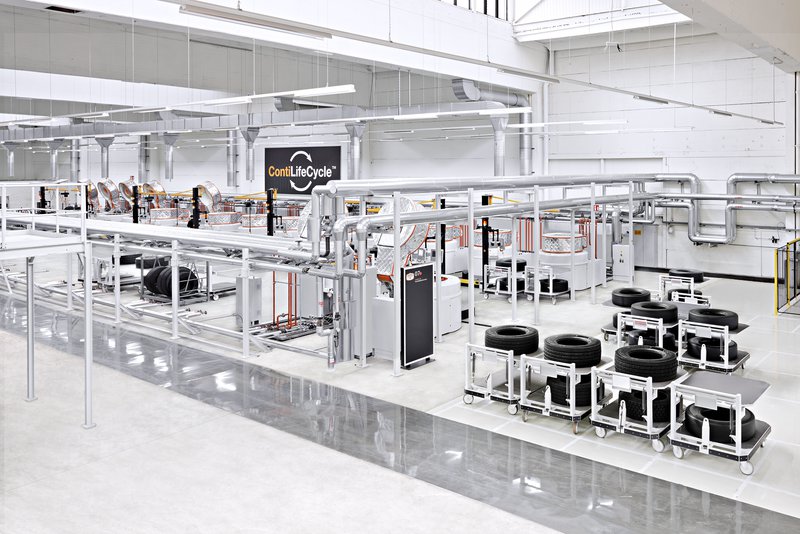Retreading: Continental talks environmental benefits
 A retreaded ContiRe tyre saves 70-80% of the materials required to manufacture a new tyre
A retreaded ContiRe tyre saves 70-80% of the materials required to manufacture a new tyre
In addition to saving money, truck fleet operators can reduce their vehicles’ environmental footprint by adopting a tyre programme that includes retreading. In light of the current public debate about CO2, Continental has shared on how its ContiRe retreads can help.
“The positive stats which support tyre retreading speak for themselves,” comments Continental. “A retreaded ContiRe tyre saves 70-80 per cent of the materials required to manufacture a new tyre, therefore significantly reducing the impact on the environment. For each ContiRe tyre produced, Continental saves 68 litres of oil and 44kg of rubber compound.”
The ContiLifeCycle programme, Continental’s cradle-to-grave approach to tyres, makes use of mould cure, or hot retreading. This involves processes virtually identical to those found in the production of completely new tyres. However, the ContiLifeCycle processes use significantly fewer precious resources, such as natural rubber, compared to new tyre production. The energy used in the production process is reduced by up to 70 per cent, further improving the carbon footprint.
In addition, retreading cuts down on the scrapping, exportation and incineration of worn-out tyres which, over the course of a year, can release over 160,000 tonnes of CO2 into the air. The retreading process avoids this, with each retread using 70-80 per cent of a worn-out tyre and preventing 182kg of CO2 being released into the atmosphere.
“Continental’s tyre casing serves as a valuable material in the retreading process and can also be used for professional regrooving in future,” comments Steve Howat, general manager – Technical Services, Continental Tyres UK. “As well as allowing fleet operators to utilise the tyre for longer, the process creates a lower profile thickness to reduce rolling resistance and fuel consumption. This is what makes ContiRe a more environmentally friendly option.”
Customer benefits
As well as being a more environmentally-conscious option, a correctly used retread is more cost-effective in the long term. A retread costs around 75 per cent the price of a brand-new tyre.
Low-cost, single-life tyres are not always suitable for retreading and therefore cost more to scrap and replace. Continental stresses that its tyres are “specially designed and built with the ability to be retreaded into ContiRe tyres in future.” A commercial fleet that uses single-life tyres uses four times as many tyres, compared to a fleet that uses premium tyres and retreading.
“Using our ContiLifeCycle programme and premium ContiRe products, customers can give new life to their worn tyre and realise its full economic performance,” Howat adds. “What is more, the tyres are subject to durability and safety tests so that a set of ContiRe tyres can be covered by Continental warranty. It is this value-added quality which draws the customer to hot-retreads and makes them a crucial element in the drive towards lowest overall operating costs.”




Comments